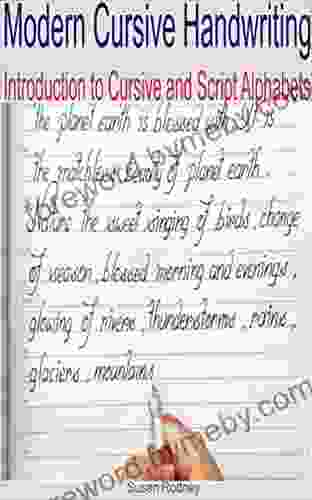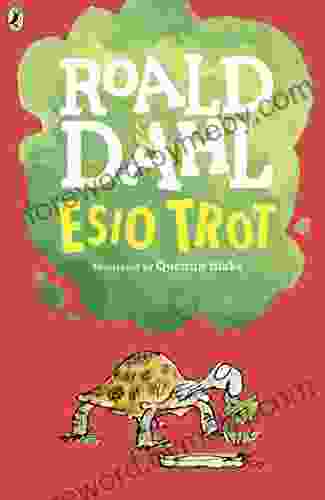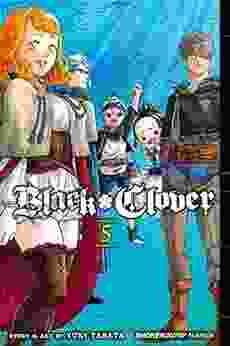From Schematic Designs to Finished Boards: A Comprehensive Guide to PCB Design

Printed circuit boards (PCBs) are the backbone of modern electronics. They provide the physical foundation for connecting electronic components and enabling the flow of electrical signals. Designing a PCB is a complex and multi-faceted process that requires a deep understanding of electronics, materials, and manufacturing techniques.
4.4 out of 5
| Language | : | English |
| File size | : | 43504 KB |
| Text-to-Speech | : | Enabled |
| Enhanced typesetting | : | Enabled |
| Print length | : | 366 pages |
| Screen Reader | : | Supported |
This comprehensive guide will take you through the entire PCB design process, from schematic capture to board layout and fabrication. Whether you're a novice designer or an experienced engineer, you'll find valuable insights and practical tips to help you create functional and reliable PCBs.
Schematic Capture
The first step in PCB design is to create a schematic diagram. A schematic is a graphical representation of the circuit that you want to implement on the PCB. It shows the electrical connections between different components and provides a visual overview of the circuit's functionality.
There are many different software tools available for schematic capture. Some popular options include Eagle, Altium Designer, and KiCad. These tools provide a variety of features to help you create accurate and readable schematics.
Board Layout
Once you have created a schematic, the next step is to lay out the PCB. This involves placing the components on the board and routing the traces that connect them. The goal of board layout is to create a design that is both functional and manufacturable.
There are a number of factors to consider when laying out a PCB, including:
- Component placement: The placement of components on the board can affect the circuit's performance and manufacturability.
- Trace routing: The traces that connect components should be routed in a way that minimizes noise and interference.
- Board size: The size of the board is determined by the number of components and the complexity of the circuit.
- Manufacturability: The board layout should be designed in a way that makes it easy to manufacture.
There are a number of software tools available for PCB layout. Some popular options include Eagle, Altium Designer, and KiCad. These tools provide a variety of features to help you create manufacturable and high-quality PCB layouts.
Fabrication
Once you have created a board layout, the next step is to fabricate the PCB. This involves creating a physical board from the design files. There are a number of different fabrication methods available, including:
- PCB milling: This method uses a CNC mill to carve the traces and pads into a copper-clad board.
- Photolithography: This method uses a photoresist to create the traces and pads on a copper-clad board.
- Laser direct imaging: This method uses a laser to directly create the traces and pads on a copper-clad board.
The choice of fabrication method depends on a number of factors, including the complexity of the board, the desired quality, and the cost.
Testing
Once the PCB has been fabricated, the next step is to test it. This involves verifying that the board is functioning properly and that there are no errors in the design. There are a number of different testing methods available, including:
- In-circuit testing: This method uses a test fixture to apply electrical signals to the board and verify that the components are functioning properly.
- Functional testing: This method uses a test fixture to simulate real-world conditions and verify that the board is functioning properly.
- Automated optical inspection: This method uses a camera to inspect the board for any defects or errors.
The choice of testing method depends on a number of factors, including the complexity of the board, the desired quality, and the cost.
PCB design is a complex and multi-faceted process, but it is also a rewarding one. By understanding the steps involved in the design process, you can create functional and reliable PCBs that will meet your needs.
If you're interested in learning more about PCB design, there are a number of resources available online and in libraries. You can also find PCB design courses and workshops offered by colleges and universities.
With a little effort and dedication, you can master the art of PCB design and create your own electronic devices.
Additional Resources
- How to Design a PCB
- PCB Design Tutorial
- EE Times Blog
- PCB Design Tips
4.4 out of 5
| Language | : | English |
| File size | : | 43504 KB |
| Text-to-Speech | : | Enabled |
| Enhanced typesetting | : | Enabled |
| Print length | : | 366 pages |
| Screen Reader | : | Supported |
Do you want to contribute by writing guest posts on this blog?
Please contact us and send us a resume of previous articles that you have written.
 Book
Book Novel
Novel Page
Page Chapter
Chapter Text
Text Story
Story Genre
Genre Reader
Reader Library
Library Paperback
Paperback E-book
E-book Magazine
Magazine Newspaper
Newspaper Paragraph
Paragraph Sentence
Sentence Bookmark
Bookmark Shelf
Shelf Glossary
Glossary Bibliography
Bibliography Foreword
Foreword Preface
Preface Synopsis
Synopsis Annotation
Annotation Footnote
Footnote Manuscript
Manuscript Scroll
Scroll Codex
Codex Tome
Tome Bestseller
Bestseller Classics
Classics Library card
Library card Narrative
Narrative Biography
Biography Autobiography
Autobiography Memoir
Memoir Reference
Reference Encyclopedia
Encyclopedia Felix Scheinberger
Felix Scheinberger Erin Meyer
Erin Meyer Zeb Tsikira
Zeb Tsikira Jonathan White
Jonathan White Ernest Hemingway
Ernest Hemingway Fiston Mudacumura
Fiston Mudacumura Fabio Viviani
Fabio Viviani Laura Yirak
Laura Yirak Erik Loomis
Erik Loomis Erica Blumenthal
Erica Blumenthal Eric Sydell
Eric Sydell Sheila Watt Cloutier
Sheila Watt Cloutier Eric Stone
Eric Stone Mark Mazower
Mark Mazower Francesca Gino
Francesca Gino Esphyr Slobodkina
Esphyr Slobodkina Len Berry
Len Berry Evelio Grillo
Evelio Grillo Faithann Y Brown
Faithann Y Brown Neta Lohnes Frazier
Neta Lohnes Frazier
Light bulbAdvertise smarter! Our strategic ad space ensures maximum exposure. Reserve your spot today!

 Raymond ParkerUnveiling the Enchanting Realm of "The White Spirit: A Novel of King Arthur"
Raymond ParkerUnveiling the Enchanting Realm of "The White Spirit: A Novel of King Arthur"
 Billy PetersonUnlock the Elegance of Modern Cursive Handwriting: An Immersive Introduction...
Billy PetersonUnlock the Elegance of Modern Cursive Handwriting: An Immersive Introduction... Adam HayesFollow ·14.6k
Adam HayesFollow ·14.6k Darren NelsonFollow ·3.4k
Darren NelsonFollow ·3.4k Fyodor DostoevskyFollow ·13.8k
Fyodor DostoevskyFollow ·13.8k Liam WardFollow ·16.7k
Liam WardFollow ·16.7k Eugene PowellFollow ·14.3k
Eugene PowellFollow ·14.3k Rick NelsonFollow ·5.2k
Rick NelsonFollow ·5.2k Caleb LongFollow ·19.6k
Caleb LongFollow ·19.6k Paulo CoelhoFollow ·15.8k
Paulo CoelhoFollow ·15.8k

 Al Foster
Al FosterDive into the Enchanting World of Manatees: An...
Unveiling the Secrets of the Gentle...

 Isaac Mitchell
Isaac MitchellThe Farm Reggie and Friends: US Version - A Captivating...
A Heartwarming Tale that Embraces...

 Esteban Cox
Esteban CoxThe Interior Design Handbook: Your Comprehensive Guide to...
Are you ready to...

 William Wordsworth
William WordsworthFall Head Over Heels for "Esio Trot" by Roald Dahl: A...
Prepare to be charmed, amused, and utterly...

 Caleb Carter
Caleb CarterBlack Clover Vol Light Frida Ramstedt: A Thrilling...
Prepare to be spellbound by...

 Richard Simmons
Richard SimmonsFantastic Mr. Fox: A Literary Adventure That Captivates...
In the realm...
4.4 out of 5
| Language | : | English |
| File size | : | 43504 KB |
| Text-to-Speech | : | Enabled |
| Enhanced typesetting | : | Enabled |
| Print length | : | 366 pages |
| Screen Reader | : | Supported |








